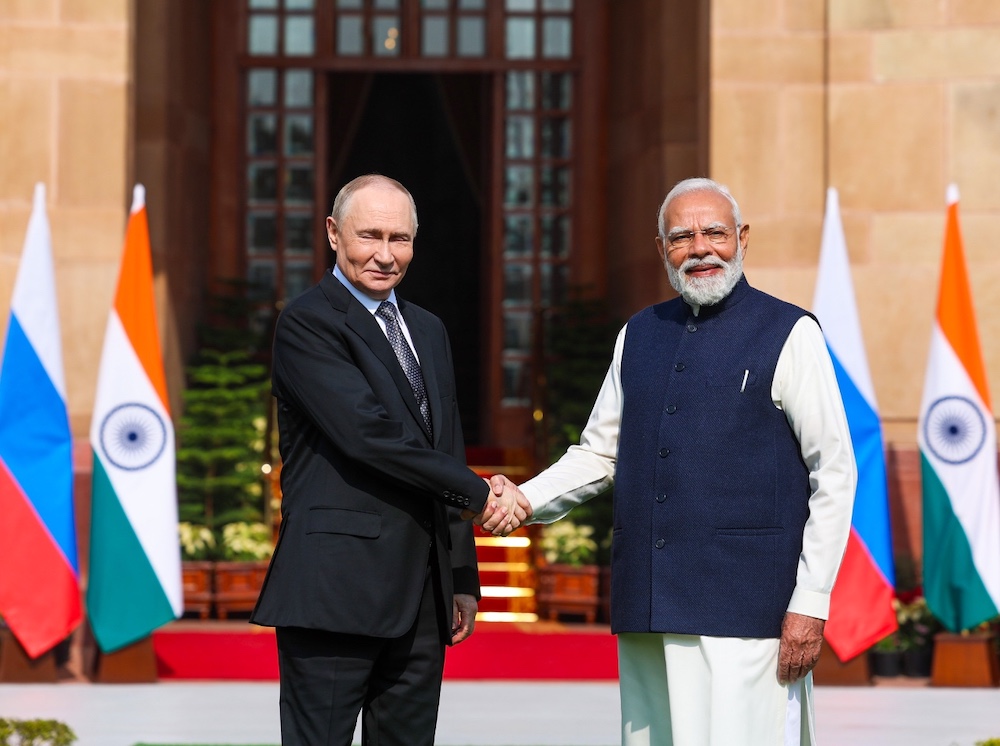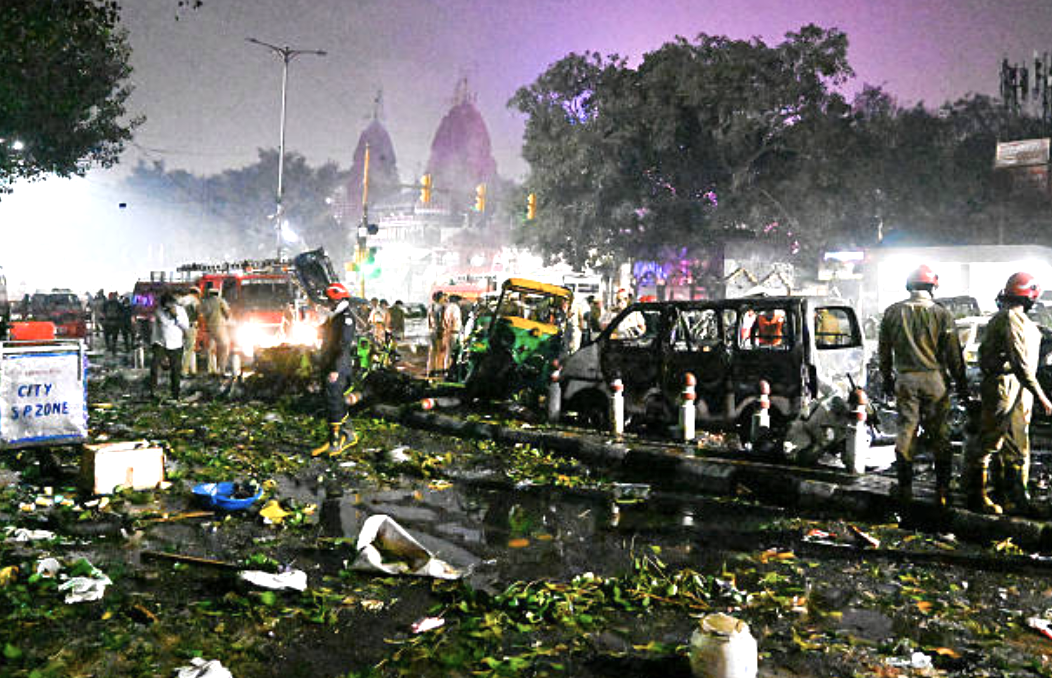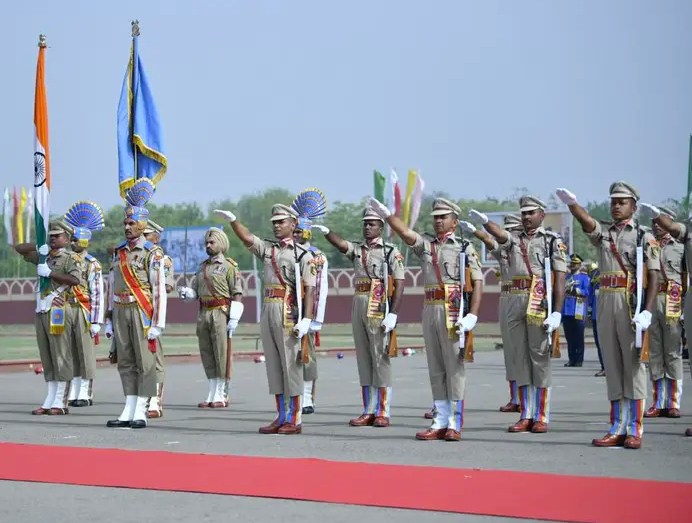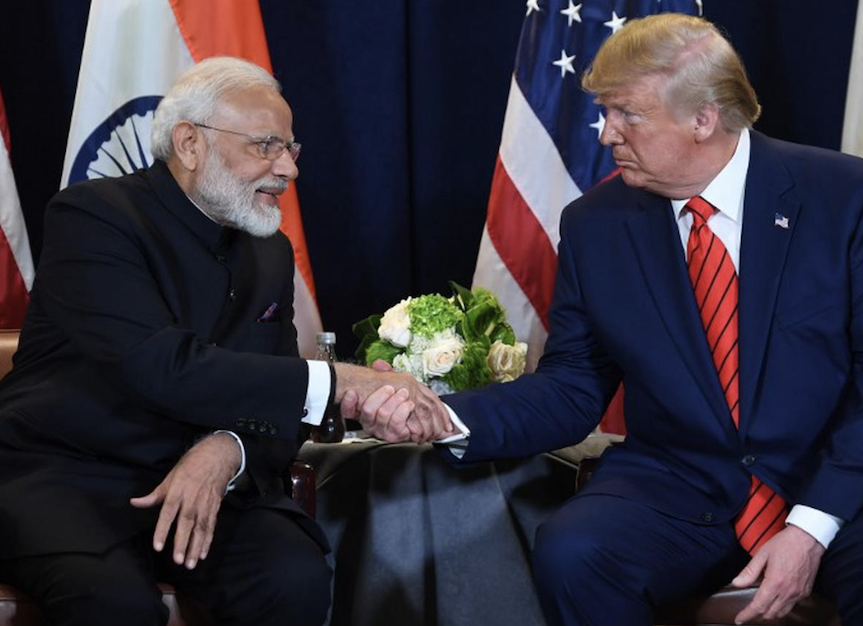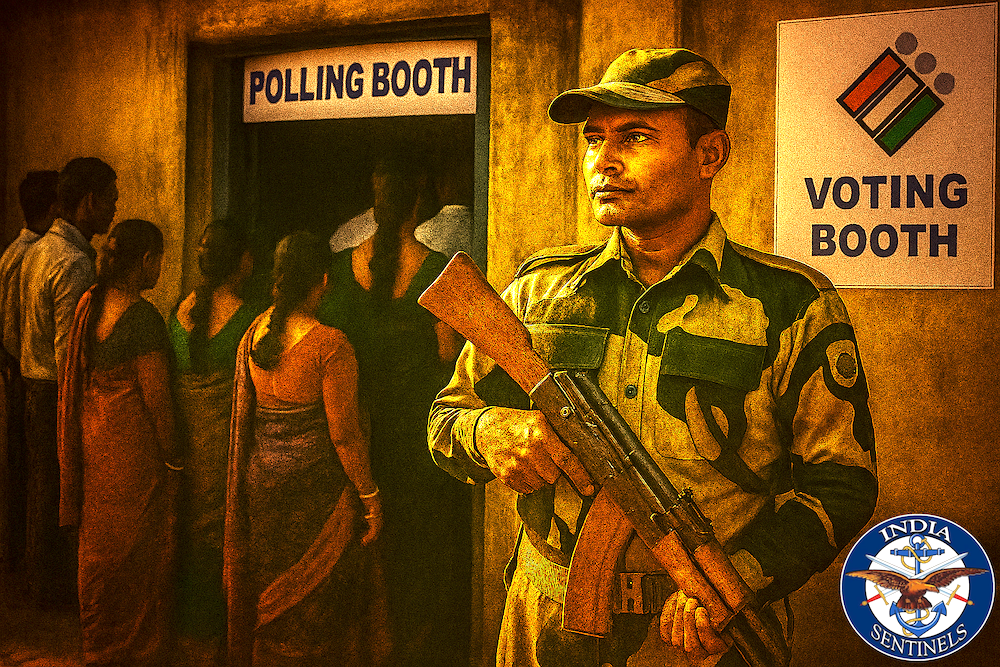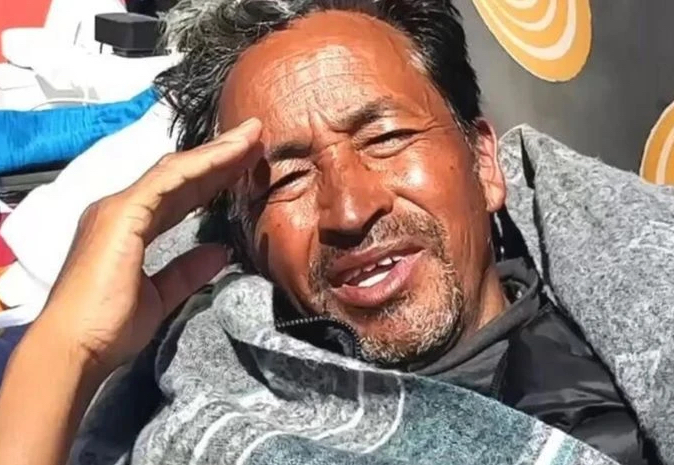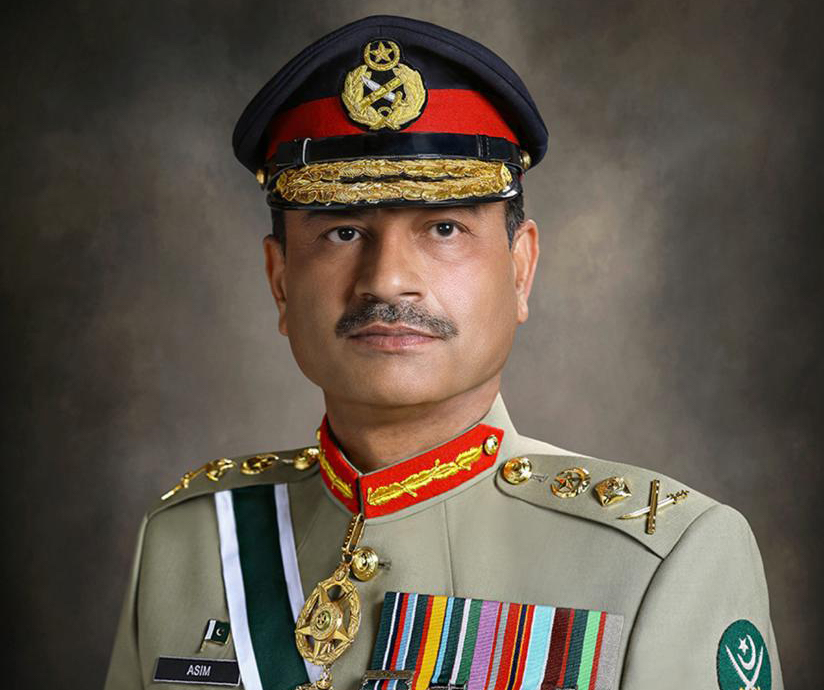 Asim Munir’s official portrait when he became the Pakistani army chief in 2022. (Photo: ISPR/Handout)
Asim Munir’s official portrait when he became the Pakistani army chief in 2022. (Photo: ISPR/Handout)
The elevation of Pakistan’s chief of army staff, General Asim Munir, to the rank of field marshal by the Shehbaz Sharif government was neither surprising nor unprecedented given Pakistan’s history. In Pakistan, generals typically elevate themselves or force the ceremonial establishment to do the job. The promotion makes Munir only the second person in Pakistan’s history to hold this rank after Mohammad Ayub Khan in 1959, but its timing and implications demand careful analysis from an Indian border security perspective.
The elevation followed three major events, two of which established the radical, hard-line credentials of Munir vis-à-vis India. These were his anti-India rhetoric regarding Kashmir, the execution of the Pahalgam terrorist attack that prompted India’s Operation Sindoor on May 7, which targeted nine sites across Pakistan-administered Kashmir and Pakistan’s Punjab province. In Operation Sindoor, India claims to have killed over 100 terrorists, including several senior leaders, inflicting significant damage on Pakistan’s military infrastructure.
Read also: With FM Munir in Pak’s charge, India must see the ‘black swan’ coming
Strategic Implications Beyond Ceremonial Promotion
The elevation is neither nominal nor ceremonial but deeply strategic. Munir’s tenure was extended in November 2024 from three to five years, and he continues as the all-powerful chief of army staff – the one who holds the throne and decision-making strings with the civilian establishment serving as proxy. The promotion aims to offset the negative impact of setbacks Pakistan suffered during Operation Sindoor, building a narrative to convince the Pakistani public that their armed forces performed exceptionally well under Munir’s leadership, thus justifying his elevation to field marshal.
This narrative-building exercise seeks to present military setbacks and defeats as victories, deceiving Pakistan’s populace. However, the elevation represents more than mere propaganda – it rewards Munir’s anti-India rhetoric and has wider strategic and tactical implications. With his extended tenure until November 2027, or possibly beyond with another extension, Munir will continue executing his anti-India hardline agenda at both strategic and tactical levels. He will likely use proxies to provoke India and utilise such opportunities to strike back with comprehensive Chinese support, potentially involving limited Chinese actions below the threshold of war along the entire front.
Read also: India mustn’t take Pakistan COAS’s promotion to field marshal lightly
Border-Security Challenges Across the Western Front
Munir’s hardline approach will affect the entire India-Pakistan border, encompassing Jammu & Kashmir, Punjab, Rajasthan, and Gujarat. Pakistan will ensure that the whole India-Pakistan border remains a conflict zone during peacetime, especially in Jammu & Kashmir and, to a larger extent, Punjab, with Rajasthan and Gujarat affected to a lesser degree. This strategy aims to reap the benefits of peacetime conflict during conventional conflagration, which may likely occur during Munir’s extended tenure.
A great responsibility therefore falls upon the Border Security Force (BSF) to strategize operational deployment that gives impetus to tactical operations for ensuring peace at borders and imposing caution upon the adversary by maintaining an aggressive offensive and defensive posture. This also calls for analysing the impact of heavy shelling on personnel, strengthening overground and underground defences, and creating permanent underground infrastructure for dispersal management to escape artillery bombardment.
The BSF must appreciate how Pakistan will influence and challenge border security during both peace and wartime, adopting a border-specific approach based on threat perception. If we analyse the international border from Jammu & Kashmir, including the line of control, to Gujarat, an area-wise, threat-specific approach is essential. The threats along the Jammu & Kashmir border include smuggling of drugs, arms and ammunition, tunnelling, infiltration, sniping aimed at border personnel and civilians, and Border Action Team (BAT) operations.
Similar threats exist along international borders with other states, though to a lesser extent, except Punjab, which is already a hub for cross-border drug smuggling and faces continuous attempts to revive militancy.
Read also: BSF is an armed force, not police, nation must know
Operational Reforms and Tactical Adaptations
There is an urgent need to appreciate, revisit, and reassess the entire gamut of border security and conventional warfighting, incorporating lessons learned during Operation Sindoor to arrive at correct solutions for strengthening border guarding and conventional warfighting capabilities. What emerges is the need to plug gaps, increase the intensity of boots on the ground, and effectively integrate technology with human effort to establish a hybrid fail-safe surveillance grid.
Coupled with this is the need to strengthen conventional defence for warfighting, training, and organisational reforms to make tactical groupings more attuned to fighting a war lasting 10–15 days. Formations must examine whether they have standard operating procedures (SOPs) for casualty evacuation chains, ammunition replenishment chains, supply of rations and essentials, and repair and recovery chains for weapons, equipment and vehicles, keeping lessons learned from Operation Sindoor in mind. If such SOPs are non-existent, they must be prepared with wartime realities in focus.
Another important aspect concerns innovations needed in organizational structure and the introduction of new weaponry, especially area weapons and artillery in direct firing roles. For particularly the international border in Jammu, the BSF needs 120mm mortars and advanced artillery pieces.
Read also: How BSF’s ‘offensive defence’ thwarted Pakistan’s designs during Op Sindoor
Future wars may not have border restrictions, with missile and air warfare playing dominant roles, but the importance of land borders and their sanctity and territorial integrity remains inviolable. Physical violation not only shatters the perception of invincibility but also affects the national psyche.
In addition to ground specific individual and collective training on border management, there is a need to re-examine conventional warfighting capabilities along the entire border and strengthen them through regular conventional training and collective training alongside Indian Army formations responsible for the area.
Higher headquarters and leadership need to assume a greater professional role at the operational level by appreciating the intricacies of operational deployment for border security and conventional war, leaving the tactical level for field commanders instead of adopting a hands-off approach. Leadership must actively engage and integrate with the army for better coordination during peace to ensure success in war.
Read also: BSF must brainstorm to meet dynamic battle challenges
Training Revolution for New Realities
Another important aspect requiring revisiting is training, generally a low priority considering constant movement and deployment in internal security operations. The BSF needs to reassess its individual and collective training format, factoring in face-to-face deployment against radicalised, hardline Pakistani regulars and irregulars, duly supported by state-sponsored non-state actors eager for conflict and escalation at the drop of a hat.
The training curriculum at unit and training institution levels must be revised to give due weightage to war operations, incorporating physical and mental conditioning for capacity and capability building to fight a 10–15 day war as a cohesive unit. This requires physical and mental strengthening at individual, sub-unit and unit levels. It also calls for reforms in organisational structure to address basic organisational shortcomings that hinder warfighting capabilities.
Two factors – Operation Sindoor and Munir’s promotion – have almost blurred the line between peacetime border guarding and warfighting along the western border with Pakistan. For the western border, with hard-line military leadership across the border, conflict must be accepted as the new normal, with the border in a state of “no war, no peace” characterized by tension, low-intensity conflict and omnipresent threat of escalation.
Read also: Pahalgam is a wake-up call to shed myopic view on J&K proxy war
Now, border guarding along the western border has become synonymous with warfighting. The border, once considered active only along Jammu & Kashmir, has become highly active along its entire length.
The Border Security Force must factor in this new realism while framing policies on human resource management, training, operational and administrative management for both peace and war. Recent developments, including Field Marshal Munir’s unprecedented meeting with the US president, Donald Trump, at the White House, suggest Pakistan’s military leadership is increasingly assertive on the international stage, making India’s border preparedness all the more critical.
The elevation of Asim Munir represents more than a ceremonial gesture – it signals Pakistan’s commitment to an aggressive posture that will test India’s border security apparatus for years to come. India’s response must be equally strategic, transforming the BSF from a peacetime border-guarding force into a hybrid organization capable of seamless transition between border management and warfighting roles.
Disclaimer: The views expressed in the article are the author’s own and don’t necessarily reflect the views of India Sentinels.
Follow us on social media for quick updates, new photos, videos, and more.
X: https://twitter.com/indiasentinels
Facebook: https://facebook.com/indiasentinels
Instagram: https://instagram.com/indiasentinels
YouTube: https://youtube.com/indiasentinels
© India Sentinels 2025-26


